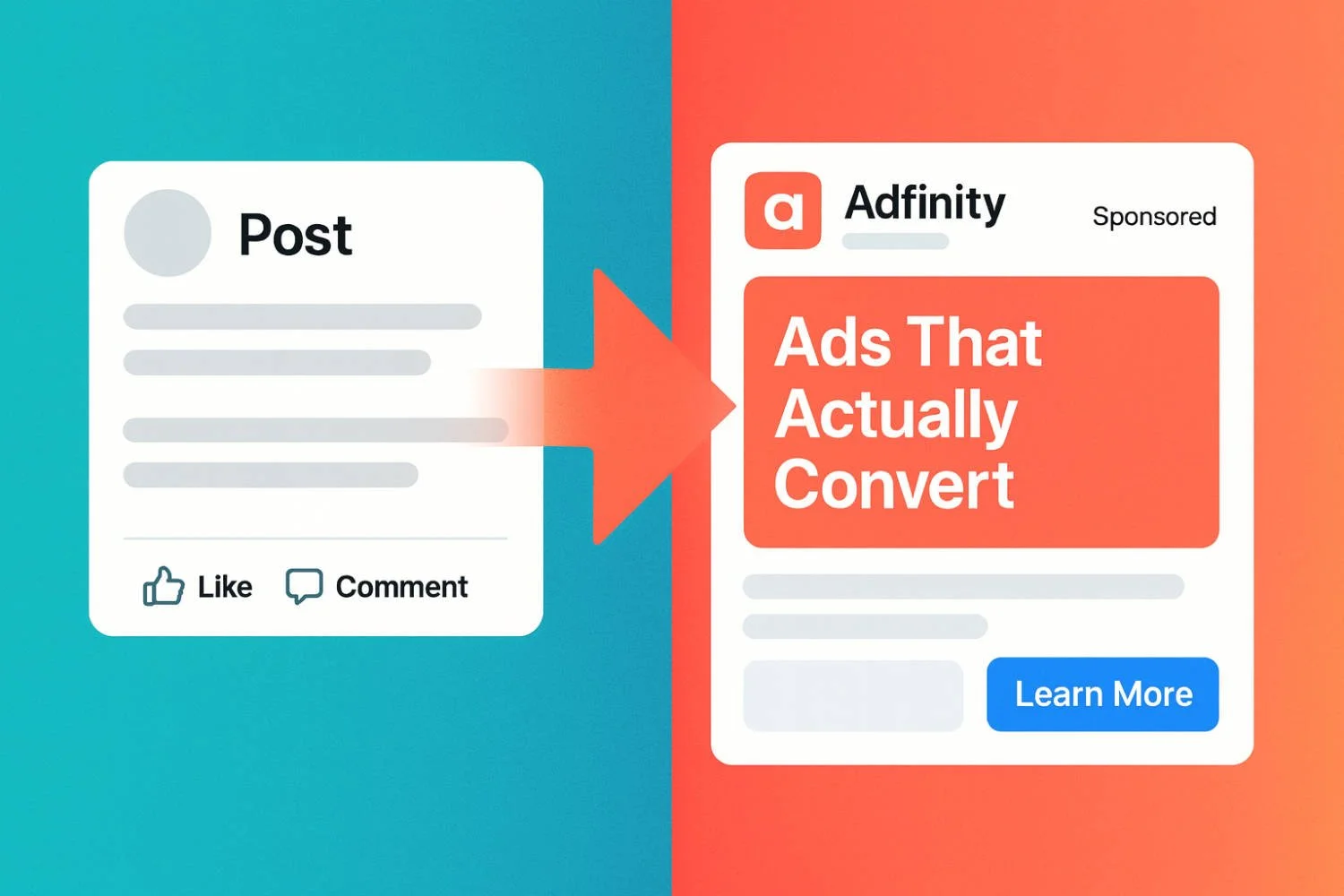How to Turn Social Posts into Ads That Actually Convert
Boosting posts is easy, but doing it effectively takes more planning. Many brands click “Boost”, or the platform equivalent, when a post performs well, yet few track what happens next. Some ads get reach but no real results; others perform by chance, then fade quickly.
The truth is, the best ads often start as great organic posts. If your audience already engages, saves, or shares it, that’s a strong sign it can perform as a paid ad too. Here’s how to turn those proven posts into cost-efficient campaigns that convert.
Step 1: Identify posts worth promoting
Not every post should become an ad. Start with content that already earned attention on its own. This is what we call earned validation. When people naturally engage, the algorithm has already “tested” your idea for you.
What to look for:
Posts with strong engagement rates (likes, shares, comments, or saves)
Reels or videos with high watch-through percentage
Carousel posts with above-average link clicks or profile visits
These signals mean your audience connected with the message. Promoting such posts extends their reach to new people who are likely to respond the same way.
If you’re already managing your brand channels through our social media content management services, these analytics are built into the monthly reporting. We can easily spot which pieces are worth testing as paid content.
Step 2: Adapt your content for ads
Before promoting, refine the creative so it fits ad objectives. A few small changes can make a big difference between “seen” and “clicked.”
How to prepare a post for ad use:
Add a clear call to action, such as “Shop Now,” “Book a Trial,” or “Learn More.”
Keep captions shorter and focused on one benefit or solution.
Add subtitles for Reels or video posts to capture silent viewers.
Trim videos to 15-30 seconds for Meta or TikTok Ads.
Test two or three versions of the same creative to see which performs best.
According to Meta’s Creative Best Practices (2025), campaigns that use multiple versions of the same creative typically achieve up to 30% lower cost per result during the learning phase - proof that small variations can make a measurable difference.
Context also matters. What works for your followers may need clearer positioning for cold audiences. Use opening lines or visuals that quickly show what problem you solve or why the product matters.
Step 3: Combine with retargeting
This is the missing step most small businesses skip. Once a boosted post gains reach, you can build a retargeting audience from the people who watched, clicked, or commented.
Retargeting costs less and converts faster because these users already know your brand. You can then show them a second ad that includes a stronger offer or incentive.
First, promote an engaging post to a broad audience. Then, create a retargeting audience of those who interacted showing them a follow-up ad with a stronger or more defined offer.
The step-by-step ways to set this up differ between the social media platforms but the concept remains the same. This simple funnel of awareness, engagement, then conversion, consistently delivers stronger ROI than running random boosted posts. For a more structured approach, explore how our online advertising services integrate paid strategy into your social content.
Step 4: Measure what matters
When you boost posts strategically, your goal isn’t just engagement or reach, it’s results. Move away from vanity metrics and focus on what drives actual outcomes. Track:
Saves, shares, and profile visits (interest signals)
Click-through rate (CTR) and cost per engaged user
Leads, website sign-ups, or purchases generated after exposure
Review these numbers every few weeks to understand which messages convert. Over time, you’ll see clear patterns, often the most “human” or helpful posts become the best ads.
Step 5: Keep testing and refining
What works once won’t always work next time. Algorithms, creative fatigue, and audience saturation all play a role. Keep your testing light and ongoing: swap headlines, refresh thumbnails, and rotate older posts that performed well organically.
If posts continue to perform across formats (Reels, static, carousel, etc.), they can become part of your evergreen ad library. This library becomes a reliable source of proven, low-cost creatives you can reuse anytime.
Final thoughts
Turning social posts into effective ads isn’t about boosting everything. It’s about recognising what your audience has already validated, refining it for a new audience, and closing the loop with retargeting.
Adfinity’s team connects content creation and paid performance under one plan, so brands can move from organic engagement to measurable results without starting from scratch.
If you’d like our team to review your top-performing posts and suggest which to test as ads, contact us for a quick content-to-ads audit and we’ll be happy to help.
Sources
Meta Business Help Center: Boosted posts vs Ads Manager (September 2025)
Meta Business: Creative Best Practices for Meta Ads (September 2025)
TikTok for Business: Creative Center & Top Ads Library (October 2025)
Hootsuite Social Trends Report 2025
Sprout Social Index 2025

